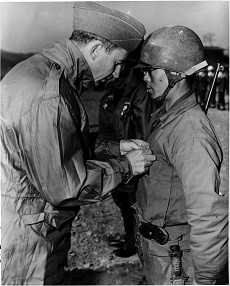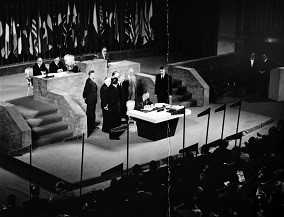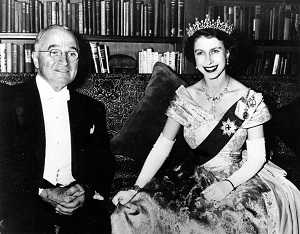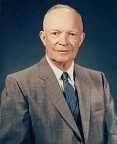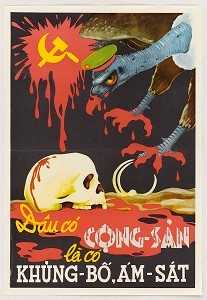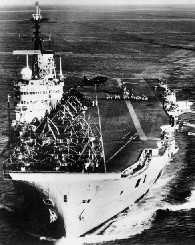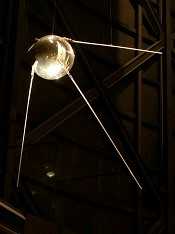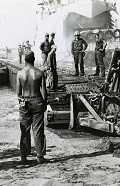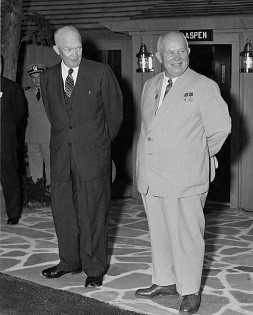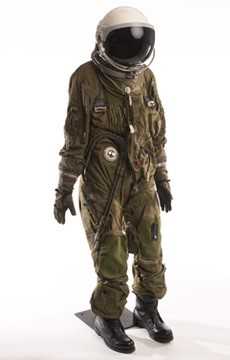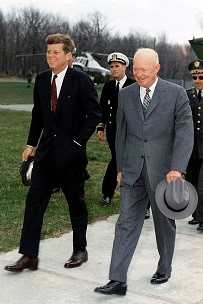Current/Central Intelligence Bulletin Collection
Current/Central Intelligence Bulletin Collection
President Harry Truman received his daily intelligence digest, the Daily Summary, between 1946 and 1951. That year, the "new and improved" version called the Current Intelligence Bulletin began production. This remained the format of the president's daily digest through Dwight Eisenhower's two terms (with a name change to the Central Intelligence Bulletin in 1958). The Current/Central Intelligence Bulletin grew longer than its predecessor over time with the addition of more items and more analysis, and would eventually contain more graphics as printing technology improved.
- Part 1: Current Intelligence Bulletin 28 February-30 June 1951
- These reports focused on the ongoing Korean War and the steadily growing problem of Vietnam. The Soviets continued to isolate West Berlin and threaten Yugoslavia. The dominant issue covered during these months, however, was Iran's attempt to nationalize the Anglo-Iranian Oil Company, and the British efforts to resolve the situation.
- Part 2: Current Intelligence Bulletin 1 July-30 December 1951
- The primary focus of these reports continued to be the Korean War. Other highlights include the signing of the Japanese Peace Treaty, which formally ended World War II, and the expanding membership of the North Atlantic Treaty Organization. The fragile post-war order was rocked during this period by the assassinations of King Abdullah of Jordan and Prime Minister Ali Khan of Pakistan.
- Part 3: Current Intelligence Bulletin 1 January-30 June 1952
- The major issue covered in these reports remained the Korean War, characterized this period by stalemate on the battlefield and inconclusive ceasefire negotiations. Anticolonial sentiment continued to grow in French Indochina and began to become a significant factor in British Kenya. The United Kingdom received a new queen in February with the accession of Elizabeth II.
- Part 4: Current Intelligence Bulletin 1 July-31 December 1952
- The dominant issue covered in these reports continued to be the Korean War, which remained a stalemate. Anticolonial and nationalist movements, however, grew in intensity in the latter half of 1952. Of special note was the end of the Egyptian monarchy with the overthrow of King Farouk in July, and the violent outbreak of what became known as the Mau Mau Rebellion in British Kenya in October.
- Part 5: Current Intelligence Bulletin 1 January-31 December 1953
- There were significant changes in US and Soviet leadership in 1953, with the start of the Eisenhower administration in January and the death of Joseph Stalin in March. Coverage of the USSR dominated the reports for the year, including Soviet bomber and submarine production and increased threats to Eastern Europe. Korea ceased to be a main topic with the signing of the Korean Armistice Agreement in July. Political instability in Iran, including the overthrow of Prime Minister Mohammed Mosaddegh in August, and its prospective impact on oil exports also were heavily covered.
- Part 6: Current Intelligence Bulletin 1 January-31 December 1954
- The dominant issue this year was the volatile situation in Indochina. The French began their withdrawal following their decisive defeat by the Vietnamese Communists (or Viet Minh) at the battle of Dien Bien Phu in May. That summer at the Geneva Conference, the international community partitioned Vietnam, with the north to be governed by the Viet Minh and the south by a non-Communist regime. Another significant story was the debate on Western Europe's proposals to provide for its common defense, while preventing Germany from again becoming a major military power. Also of note was the June coup in Guatemala, in which the leftist regime of Jacobo Arbenz was replaced by a military regime under Carlos Castillo Armas.
- Part 7: Current Intelligence Bulletin 2 January-31 December 1955
- During this period, Argentine President Juan Peron was deposed by a military junta and the Arab-Israeli conflict intensified as Syria threatened Israel with military emplacements along the Golan Heights. The reports of 1955 were dominated, though, by the continuing Cold War. Early in the year, the People's Republic of China (PRC) shelled Taiwan-controlled islands off the coast of PRC's Fujian Province. The PRC rejected the establishment of a Chinese Nationalist regime in Taiwan, considering the island part of the PRC. The situation tested US resolve to protect an anti-Communist partner in the face of a serious threat from a Communist aggressor. In Southeast Asia, South Vietnam's new anti-Communist regime of Ngo Dinh Diem enjoyed very little public support. In the USSR, Nikita Khrushchev emerged as successor to Stalin, who had died in 1953.
- Part 8: Current Intelligence Bulletin 2 January-30 December 1956
- Nikita Khrushchev's efforts to secure political control in the Soviet Union, including his denouncement of the excesses of the Stalin era, was a theme of the reports of 1956. Khrushchev shocked delegates to the 20th Congress of the Communist Party of the Soviet Union in February with a speech attacking the cult of personality of Joseph Stalin. Khrushchev's "softer" approach was put to the test in June with some localized worker uprisings in Poland, which were peaceably resolved. Much more serious was the nation-wide Hungarian uprising in October, which led to a Soviet invasion and deposition of Hungarian leader Imre Nagy. October also saw the culmination of the Suez Crisis, touched off in July by the nationalization of the Suez Canal by Egyptian President Nasser. In October, Israel, the United Kingdom, and France (without US support) attacked Egypt in an unsuccessful effort to oust Nasser and reopen the canal.
- Part 9: Current Intelligence Bulletin 1 January-31 December 1957
- Cold War tensions dominated the reporting in 1957. Political upheaval racked Indonesia, with the struggle between moderate elements in President Sukarno's regime and Indonesia's Moscow-backed Communist party. Sukarno declared martial law in March and survived an assassination attempt in November, after which he left the country for a six-week sabbatical. Syria's regime also faced a growing threat from pro-Soviet leftist elements throughout much of the year. The United States supported pro-Western regional allies Turkey, Jordan, and Iraq in the face of growing Soviet assistance to the increasingly leftist Syrian regime. In August and September, Turkey deployed 50,000 troops to its border with Syria. By October the crisis subsided as diplomatic efforts convinced Turkey to begin withdrawing its troops. The autumn saw several reports on the USSR's October launch of Sputnik—the world's first artificial satellite—assessing that this advancement could render the United States vulnerable to a Soviet intercontinental ballistic missile attack.
- Part 10: Central Intelligence Bulletin 2 January-31 December 1958
- In January 1958, the name of the Current Intelligence Bulletin was changed to Central Intelligence Bulletin. The format remained the same, however, as did the ongoing tensions between the US and the USSR. Khrushchev further consolidated his power, formally assuming the Soviet premiership in March. The USSR continued its ICBM testing and advocated for the de-militarization of central Europe—a plan embraced by the Warsaw Pact and shunned by NATO. Intensifying political and economic instability in Indonesia led to an unsuccessful coup attempt against President Sukarno. The Middle East was again rocked by widespread violence with the destruction of Iraq's pro-western Hashemite monarchy, as King Faisal was overthrown and executed. President Chamoun of Lebanon, facing dire threats to his government, requested direct US support, leading to the deployment in mid-July of over 14,000 US military personnel to Beirut. By late October, US forces had withdrawn from Lebanon, following American-led diplomatic efforts that secured a peaceful compromise.
- Part 11: Central Intelligence Bulletin 2 January-31 December 1959
- Iraq had another tumultuous year in 1959, as Prime Minister Abdel Karim Qasim put down an uprising of Arab nationalists in Mosul and later survived an assassination attempt by the pro-Nasser Baath Party. Also that year, Fidel Castro came to power in Cuba, and the USSR threatened to conclude a separate peace treaty with East Germany if the US-led West failed to do so. However, there was also a softening of Soviet rhetoric over the year, as Premier Nikita Khrushchev pushed for summit talks with the United States. Making use of this possible thaw in relations, President Eisenhower hosted Khrushchev at Camp David in September, the first-ever state visit of a Soviet leader to the United States.
- Part 12: Central Intelligence Bulletin 2 January-31 December 1960
- US relations with Cuba continued to deteriorate in 1960, as Fidel Castro nationalized US business and commercial enterprises, and entered into several trade agreements with the USSR. The month of May was dominated by the downing deep inside Soviet territory of a U-2 photographic aerial reconnaissance aircraft, piloted by Francis Gary Powers, who was captured and later that summer tried and convicted of espionage. The ensuing diplomatic crisis led to the scuttling of the 17 May summit in Paris between the United States, the Soviet Union, the United Kingdom, and France. Later in the year, turmoil erupted in the Congo after Belgium granted the Belgian Congo formal independence in June.
- Part 13: Central Intelligence Bulletin 2 January-30 Jun 1961
- The new Kennedy Administration confronted a full array of international issues in 1961. In April, a group of CIA-trained Cuban exiles landed at the Bay of Pigs on the southern coast of Cuba with the goal of overthrowing the Fidel Castro regime and establishing an anti-Communist government. The outnumbered invading force was quickly repelled by Castro's troops. The year's reports were dominated by the worsening Congo crisis, with the fragmentation of the country widening despite the efforts of the United Nations, and US concern over the high tempo of Soviet testing of space vehicles and intercontinental ballistic missiles. The situation in Laos deteriorated, as the Communist Pathet Lao insurgency gained strength against the US-backed Royal Lao government.
The changes at the CIA following the Bay of Pigs included a format update for the president's daily intelligence report. The new version, called the President's Intelligence Checklist (PICL), was first delivered on 17 June 1961. The Central Intelligence Bulletin continued to be produced as a separate publication until 10 Jan 1974, when it was replaced by the National Intelligence Daily. The PICL, however, was the president's primary written intelligence source through the remainder of the Kennedy Administration. The Kennedy PICL reports are available here
See declassified Daily Summary reports from 1946-1951
Documents in this Collection
Documents in PDF format require the Adobe Acrobat Reader®
 FOIA
FOIA

